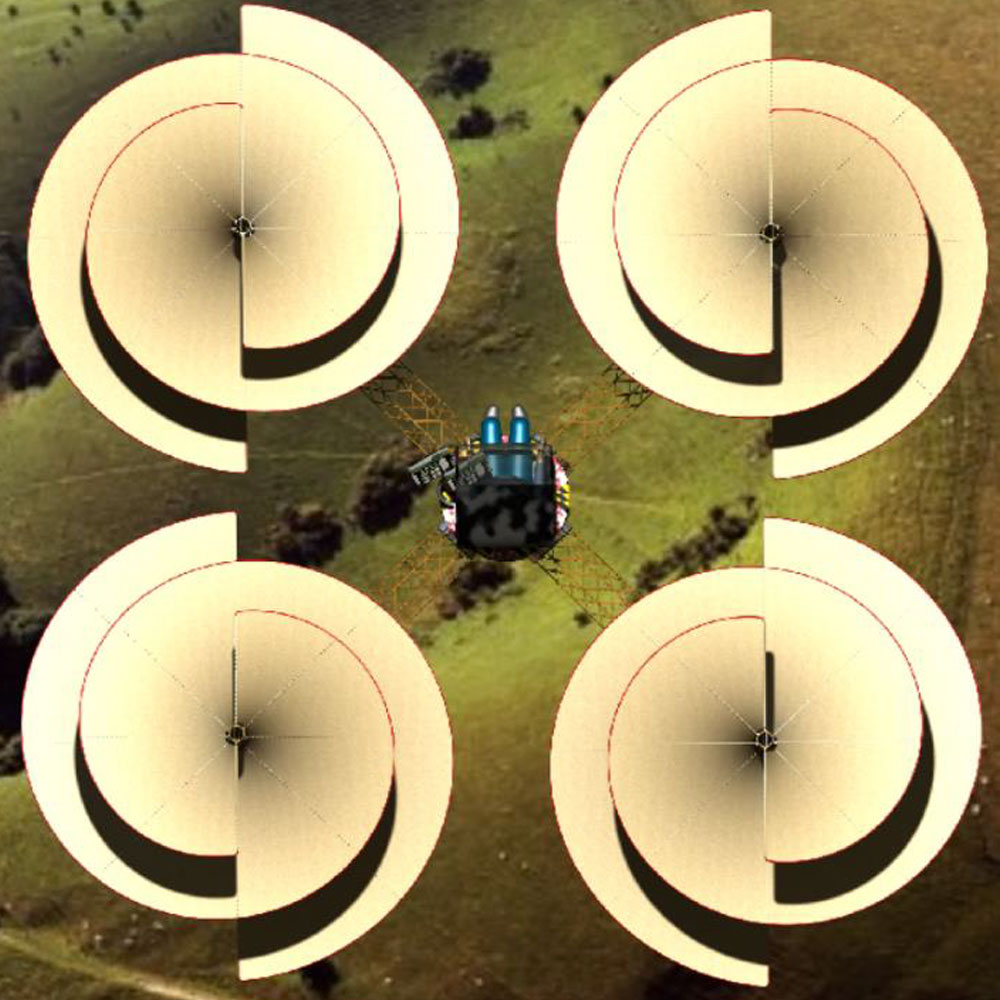
|
 |
Winning graduate team design: Elico |
|
In the fifteenth century, artist and engineer Leonardo da Vinci envisioned a craft that flew using a single helix-shaped propeller—the aerial screw—viewed by many as the first vertical take-off and landing (VTOL) machine ever designed.
In 2020, the Vertical Flight Society’s (VFS) 37th Annual Student Design Competition challenged students from across the world to re-imagine da Vinci’s design. Using modern-day analytical and design tools, could students design and demonstrate a feasible modern-day VTOL vehicle based on the aerial screw concept and demonstrate the consistency of its physics.
University of Maryland (UMD) aerospace engineering students rose to the challenge, creating two successful designs—Elico and Samsara—which won first (Graduate Category) and second (Undergraduate Category) in this year’s competition.
UMD’s winning entry in the graduate category, Elico, derived its name from the Italian root for the words “helicopter,” “propeller,” “helix” and “screw,” all rooted in Leonardo’s drawing of the aerial screw.
Developed as a technology demonstrator, Elico was designed as a fully autonomous, manned quadrotor vehicle, and improves on da Vinci’s design by using a tapered aerial screw rotor to provide all lift, thrust and control of the vehicle. A modular framework allows Elico to adapt to changing mission requirements and has hover and forward flight capabilities. According to the team, Elico allows riders to safely and easily experience the genius of Leonardo da Vinci first-hand by using an all-electric power plant, ultralight composite airframe and push button operation.
The graduate team also took the bonus prize for “Best Weight Optimization” in their design.
Graduate Team: Elico
Members: James Sutherland, Robert Brown, Ehiremen Ebewele, Emily Fisler, Katie Krohmaly, Jehnae Linkins, Koushik Marepally, Austin Prete and Ilya Semenov
Faculty Mentors: Drs. Vengalattore Nagaraj, Inderjit Chopra and Anubhav Datta
 UMD’s undergraduate team Samsara leveraged the aerial screw design, creating a modern autonomous, ultralight and electric quad-copter with four corkscrew rotors made from lightweight carbon fiber. UMD’s undergraduate team Samsara leveraged the aerial screw design, creating a modern autonomous, ultralight and electric quad-copter with four corkscrew rotors made from lightweight carbon fiber.
Undergraduate Team: Samsara
Members: Austin McClelland, Blaise Martineau, Charlie Flanagan, Christopher Savage, James Lynott, Julia Mittelstaedt, Nathan Lloyd, Nick VanZelst and Seong Yun
Faculty Mentors: Drs. Inderjit Chopra, James Baeder and Vengalattore Nagaraj
2020 marks the 19th first place win for UMD graduate students since 1998.
The VFS's annual Student Design Competition challenges students to design a vertical lift aircraft that meets specified requirements, providing a practical exercise for engineering students at colleges and universities around the world and promoting student interest in vertical flight technology. Each winning teams receives a cash stipend, and first-place teams are invited to the VFS’s Annual Forum and Technology Display to present the details of their designs.
Related Articles:
Chopra to Receive Prestigious AIAA Walter J. and Angeline H. Crichlow Trust Prize
UMD Student Team Advances in UAS Competition
UMD Students Cinch First Place in 33rd Annual AHS Student Design Competition
High-Flying Technology to Be Recognized
White Symposium to Examine Role of Helicopters in Society
Clark School Wins Helicopter Design Competition
UMD Students Sweep 2025 VFS Student Design Competition
Seven UMD Students Receive 2025 Vertical Flight Foundation Scholarships
Saetti Honored with Vertical Flight Society’s François-Xavier Bagnoud Award
Xavier Delgado Lands AIAA Best Paper Award
August 18, 2020
|

